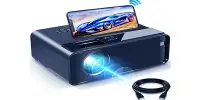The patent document, filed in 2017 and published last week, describes “a power-efficient launch system that uses the principles of Whip Dynamics to launch payloads at high speeds.” While sounding like the kind of idea you hear Devo in the basement of a hot-box, the team wrote that it could one day form a more energy-efficient method of transporting cargo into space.

Patent Design to Whip Cargo into Orbit
In an application for the device, the payloads are involved in reaching the tethers which can then transport them further into space, even possibly making it large enough to communicate with close-range spacecraft. Probably not the ideal trip for those fabulous eggs you recently bought online. All retail sales in the UK are expected to be 53 percent by 2028, a new way to transport goods faster, and a small carbon footprint is a big focus for online retailers. In response to growing demand and reach, Amazon seems to be looking to the sky for solutions as their recent patent outlines the design of a ship that can orbit fewer people through a huge cable.
Assuming that the number of drones involved would affect how far the whip could reach, the patent proposed “the second end of the cable could reach a maximum height of about 500 feet, 2000 feet or 60,000 feet” at 70,0000 feet (152 meters, 610 meters or 18,300 meters). The concept, proposed by Amazon Prime Air VP Molasses Kimchi and co-authored by Amazon inventor Louis Leroy Legrand III, aims to launch things into space at the end of a whip backed by a real squadron of drones attached to the cable.
The main goal of the unusual device is that it will allow items to reach space without the need for rocket-propelled propulsion, with more domestic use, including the introduction of delivery drones for more worldwide purchases. Whether or not the patent will ever come to fruition is not yet known, with Amazon having previously posited some pretty wild inventions that never came to be, including the smartphone with a built-in airbag to prevent cracked screens. A spokesman for Amazon said in a statement to Geekwear that such patents certainly do not reflect its current product roadmap. Like many companies, we file many prospective patent applications that explore the full potential of new technologies.















